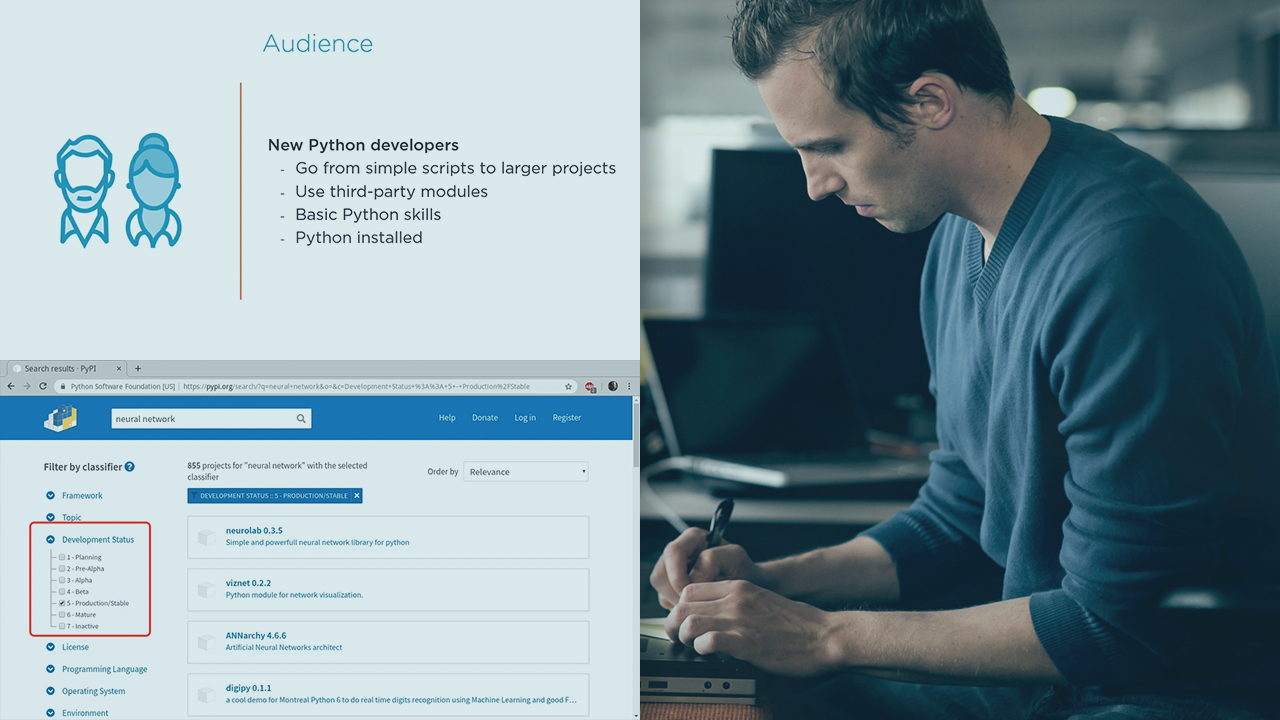- Course
Managing Python Packages and Virtual Environments
Learn how to manage the requirements of your Python projects using virtual environments and pip, the Python package installer. You will also take a look at several related tools: virtualenvwrapper, pipenv, and poetry.

- Course
Managing Python Packages and Virtual Environments
Learn how to manage the requirements of your Python projects using virtual environments and pip, the Python package installer. You will also take a look at several related tools: virtualenvwrapper, pipenv, and poetry.
Get started today
Access this course and other top-rated tech content with one of our business plans.
Try this course for free
Access this course and other top-rated tech content with one of our individual plans.
This course is included in the libraries shown below:
- Core Tech
What you'll learn
Most real-world Python projects make use of code written by others, and usually this code is included by installing Python packages. In this course, Managing Python Packages and Virtual Environments, you will learn everything you need to install and manage the packages your project requires using pip, the Python package installer. When you start working on more than a single project, you will find that there's a need to install packages for one project separately from another project. You will come to understand that there's a tool for this situation as well: virtualenv, and no professional Python developer can go without it. First, you will explore everything you need to know in order to use virtual environments on a daily basis. After covering these two core tools, you will then discover other tools that you should at least be aware of such as virtualenvwrapper, which makes managing virtual environments a lot less painful. Finally, you will discover two newer tools: pipenv and poetry, and the direction the Python community is headed. By the end of this course, you will learn how to manage the requirements of your Python projects using virtual environments and pip,
Managing Python Packages and Virtual Environments
-
Introduction | 4m 54s
-
Getting Started | 4m 50s
-
Demo: Installing pip on Windows | 3m 29s
-
Installing pip on Mac OS or Linux | 1m 30s
-
Demo: Linux Installation | 2m 16s
-
Demo: Package Management with pip | 4m 2s
-
Where Are Packages Installed? | 2m 31s
-
A Better Way to Call pip | 2m 50s
-
User and system installs | 1m 1s
-
Demo: Getting Package Information with pip | 2m 7s
-
Review | 2m

